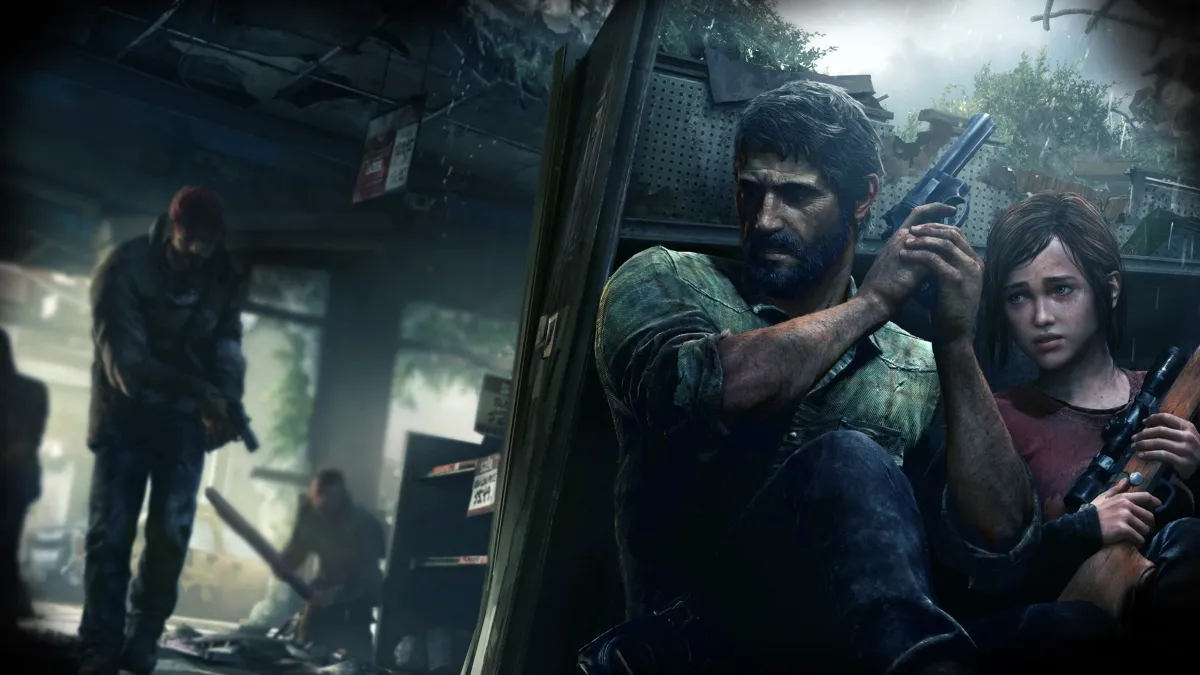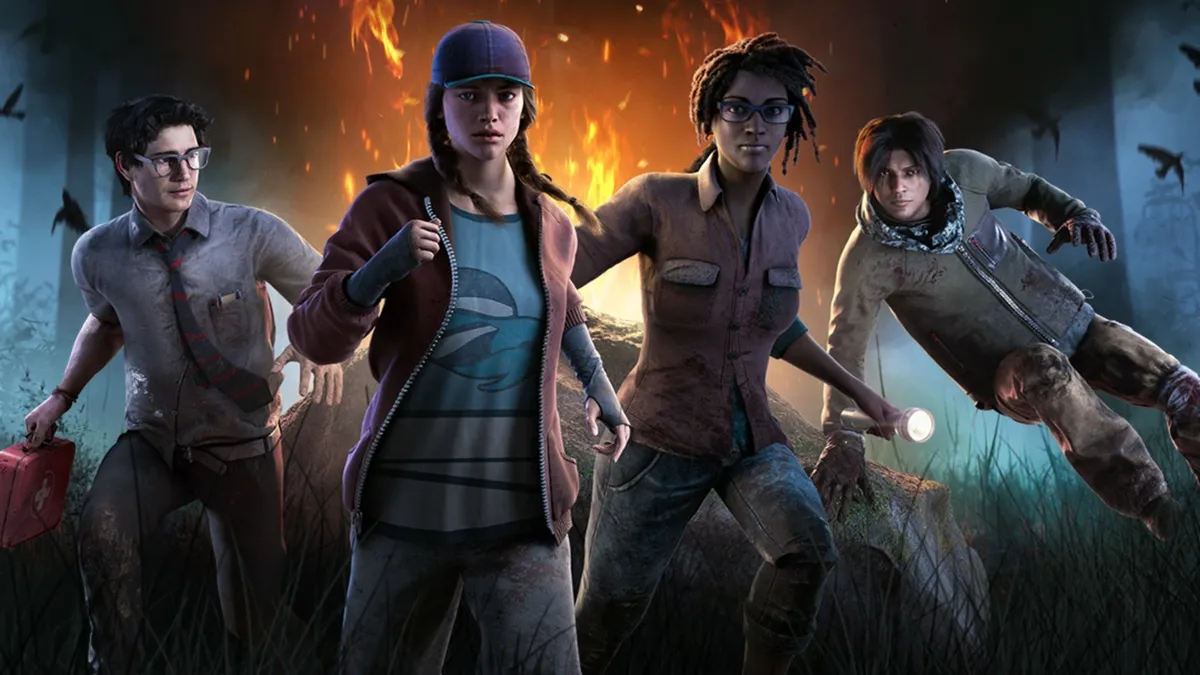Whether you’ve been a dedicated fan since 2013 or your initial exposure to The Last of Us was HBO’s faithful adaptation, we can all agree that Naughty Dog and HBO have one thing in common: stellar storytelling. Granted, Naughty Dog have had much more time to flesh out this mind-blowing world and these relatable, realistic characters across two hours-long video games, but HBO have managed to pull off the same unthinkable feat in just three episodes — the most recent of which has been cited as one of the greatest hours in TV history. That’s no small step for HBO, who aimed to follow in the footsteps of Naughty Dog, the developers behind the critically acclaimed video game — regarded as one of the greatest ever made. The secret ingredient to The Last of Us’ undeniable success is a breakthrough narrative, told from the perspective of 52-year-old man and later (in Part II) an 18-year-old teenager.
We, as an audience, live in this environment and go on this adventure through the eyes of Joel and Ellie, whose personalities couldn’t be more different. We’re taken on a trip that’s beyond belief and introduced to a world far removed from our own, but the magic behind it all is that it feels real. We’re made to believe that we’re truly navigating post-apocalyptic Boston and fighting our way through Infected as a rough-and-ready 50-something, nagged to death by the smart-mouth youth. We’re more immersed in video games than we could ever be through television; the lives of these characters and their fate is in our hands. And while that couldn’t be more terrifying, the emotional connection formed between player and character transcends ordinary storytelling, tethering us to them forever. But out of all the incredible tales ever told, where does The Last of Us stand?
10. Undertale
It might seem ridiculous to include Toby Fox’s 2D role-playing game among the most inspiring stories ever told, but there’s nothing more immersive than playing as a lost child who finds themselves navigating the Underground and meeting strange yet fascinating creatures along the way. It’s the player’s own choice as to whether these creatures are friend or foe, as Undertale forces Fisk (the child) to either destroy every monster in sight and choose the path of genocide or spare their lives and choose the path of mercy. As the game progresses, we learn more about Fisk’s origins and the child’s purpose within the Underground, acting as the chosen one who will either bring peace and salvation or destruction and ruin to the quaint world. The choices made throughout the game impact the dialogue, characters and outcomes of the story as the player’s morality acts as the cornerstone for the narrative’s development.
9. Heavy Rain
If you’re not already familiar with Quantic Dream, you will be. It was the 2010 interactive drama Heavy Rain that paved the way for Quantic Dreams’ successful career in choice-based storytelling — a sub-genre of video games that has since skyrocketed in popularity. Players control four separate protagonists whose lives all intertwine at different stages in the story, but their primary objective is to uncover the identity of the Origami Killer, a serial killer who drowns his victims in extended periods of downpour and leaves intricate pieces of origami on their corpses as his calling card. Each playable character may die depending on the choices made by the player, creating a branching narrative that changes as pivotal decisions are made. Heavy Rain also features QTEs (Quick Time Events) that require the player to act fast and complete on-screen prompts using the controller. What makes Heavy Rain so gripping is that no one would ever see the twist ending coming — not in a million years — and that sort of unpredictability keeps you guessing throughout. In fact, out of a focus group of seventy who trailed and tested the game, none were able to deduce the identity of the Origami Killer.
8. Detroit: Become Human
From the success of Heavy Rain, Quantic Dream created Detroit: Become Human, arguably one of the best choice-based games ever constructed. It took eight years, but Detroit Become Human sought to build on the fanbase that Heavy Rain had established, and in 2018, it did just that. The plot follow three androids; Connor; Kara; and Markus, who explore their newfound sentience as a detective, a maid, and a live-in carer, respectively. While Connor seeks to hunt down all sentient androids, Markus is fighting for salvation and seeks to free androids from servitude. In the middle of it all, Kara hopes to protect Alice, the daughter of the man she’d been serving for years prior. Detroit: Become Human was developed from Quantic Dream’s 2012 technology demonstration Kara, which starred Valorie Curry (Kara’s actress). Just like Heavy Rain, every single choice has a consequence, but it’s a matter of updated graphics, more thought-out characters and a far more expansive plot that puts Quantic Dream’s second effort above the first. It’s the smaller moments in Detroit that make it so special and much-loved among choice-based fans; other like-minded titles just can’t compete with its masterful sensitivity towards mature topics such as abuse, death and slavery.
7. Until Dawn
Although Heavy Rain started it all in 2010, it was Until Dawn that revived the choice-based genre in 2015, as well as reinventing the teen-horror sub-genre. From developers Supermassive Games, who would go on to create a slew of story-driven games known as The Dark Pictures Anthology, Until Dawn follows eight young adults who find themselves targeted by a deranged killer on Blackwood Mountain and must survive the night while fending off the dangerous creatures that lurk in the treacherous mines below. Before now, there hadn’t really been a name for Heavy Rain-esque games, but Until Dawn essentially coined the term “butterfly effect” to describe the mechanic used in various video games, despite the chaos theory existing long before then. Depending on the choices made, all eight characters can live or die. Supermassive Games drew inspiration from feature films like Evil Dead II and Poltergeist, and video games such as Heavy Rain (unsurprisingly), Resident Evil, and Silent Hill. There’s endless replay value with Until Dawn, allowing for hours of exploration. Not to mention, there’s never been another teen horror quite like it — not until Supermassive’s own The Quarry in 2022.
6. What Remains of Edith Finch
It might not be in the same veins as some of the other on this list, but that’s precisely what makes it so unique. Giant Sparrow’s 2017 title What Remains of Edith Finch centers on 17-year-old Edith Finch, who returns to her ancestral home after seven years. As the last surviving member of her bloodline, Edith uncovers the mysterious past of her relatives and learns about a series of deaths that caused a domino effect and eventually wiped out her family. The game plays out as an anthology, so there’s some structure to it, but the authenticity of each individual story is designed to be questionable so that the player isn’t sure which recollection of events is the truth. Widely regarded as an example of video games as an art medium, What Remains of Edith Finch went on to win a British Academy Games Award for Best Game 2017 and the Best Narrative category at both The Game Awards 2017 and the 2018 Game Developers Choice Awards. Here’s a game that strips itself down to the bare bones of storytelling, focusing on a truly riveting ride rather than non-stop action sequences.
5. Horizon Zero Dawn
Also released in 2017, Horizon Zero Dawn follows Aloy, a primitive hunter in a world overrun by advanced machines/robots. When Aloy sets out to uncover her past, she meets plentiful allies and foes alike and battles all variants of mechanical creatures. One huge advantage that Horizon Zero Dawn has over other story-driven games is that it also utilizes an open-world environment, allowing for endless hours of exploration and numerous side quests to keep the story going well beyond the main linear objectives. Besides the story, the visuals, combat, characterization and Ashly Burch (Aloy)’s voice acting were all areas of profound praise. In fact, the game performed so well that it spawned a sequel — Horizon Forbidden West — in 2022. The open-world aspect of the game is not only mesmerizing, it also opens the door to possibilities that might otherwise be restricted, such as in games where there’s only one overarching plot and multiple outcomes. Regardless of how interesting the outcomes may be, the core plot remains the same. For Horizon Zero Dawn, there’s no stone to be left unturned, so there’s never a dull moment. Besides that, the main character is likeable with an endearing personality to boot. What’s not to love?
4. BioShock
Back in the early 2000s, right when gaming was at its peak (as self-proclaimed gamers would say), 2K Boston (later known as Irrational Games) released BioShock, which is set in 1960 and follows Jack, who discovers and explores the underwater city of Rapture. Jack must fight various enemies to hunt down business magnate Jack Ryan, who desired to to create a utopia with Rapture that became more of a dictatorship. The game borrows its biopunk theme from the survival horror genre, mainly the Resident Evil, and the franchise is considered to be a spiritual successor to the System Shock series. What BioShock does so brilliantly (that many other story-driven games also do) is that it really makes you feel. It believes so strongly in its own narrative and the world it’s built that it makes players believe in it too. As ridiculous as the concept of BioShock might seem, it is — at its core — a tale of greed, deceit and retribution, which is beyond relatable in our own consequential world.
3. God of War
God of War follows Kratos, a Spartan and the Greek God of War, and his son, Atreus, as they embark on a journey to spread the ashes of Faye — Kratos’ wife and Atreus’ mother — at the highest peak of the nine realms. The game takes place primarily in Scandinavian Midgard. Santa Monica Studio developed every God of War installment from 2005’s God of War to the more recent God of War: Ragnarök, but arguably the most successful title is the sequel to 2010’s God of War III, 2018’s God of War, not to be confused with the 2005 PlayStation 3 game of the same name. It’s one of the best-looking console games ever released, its cinematography makes the emotions more real and impactful, and the interactions between Kratos and Arteus are, at times, just as confrontational as they are oddly enchanting. God of War won numerous accolades, including a handful of 2018 Golden Joystick Awards and later countless 15th British Academy Games Awards. There isn’t too many games that explore Norse mythology, but God of War is exceedingly eye-opening for a premise that explores the beguiling and intriguing history of the human race — and the human condition.
2. The Last of Us
And here we are, finally arriving at The Last of Us. Naughty Dog’s immersive action-adventure about a smuggler named Joel transporting a smart-mouth teenager named Ellie across a post-apocalyptic America doesn’t seem too spectacular on the surface, but underneath a tried-and-true zombie narrative lies an even deeper tale of profound grief, survival and humanity. Joel and Ellie aren’t the most likely pairing, but a dangerous journey across the States teaches them life lessons about compassion, sensitivity and belonging as the two of them discover their purpose. Players defend against Infected, humans who were overtaken by a fungal infection known as Cordyceps, using firearms and various resources. Not only did The Last of Us become one of the best-selling video games of all time, its live-action adaptation is receiving just as much worldwide acclaim. The game won multiple Game of the Year awards and spawned a sequel, The Last of Us: Part II, in 2020. It looks unassuming, but it’s so much more than another Resident Evil. Naughty Dog manages to make us feel for Joel and Ellie more than most fictional characters — and HBO achieved that same feat.
1. Red Dead Redemption 2
Although it only beats The Last of Us by a hair, it would be a crime to not hand Red Dead Redemption 2 the top spot. Rockstar Games achieved so much of the unthinkable with 2010’s Red Dead Redemption that it was inevitable for a sequel to be close behind. Although diehards were attached to John Marston, it’s RDR2‘s Arthur Morgan that has us sobbing for hours in one of those rare occasions where a sequel somehow exceeds the expectations set by the original. It doesn’t happen often, but RDR2 smashes it out the park. Players control Arthur Morgan, a member of the Van der Linde gang of outlaws, who must deal with the gradual decline of the Wild West as civilization evolves. Arthur must survive rival gangs, numerous adversaries and government forces who threaten his way of life. Yet another open-world environment, RDR2 was one of the most expensive games ever made, breaking several records and having the second-biggest launch in the history of entertainment, generating US$725 million in sales from its opening weekend and even going as far as to exceed the lifetime sales of Red Dead Redemption in two weeks. We’d argue that TLOU has the same emotional depth as RDR2, but the latter takes an extremely niche concept and manages to make it appealing to the entire world.







